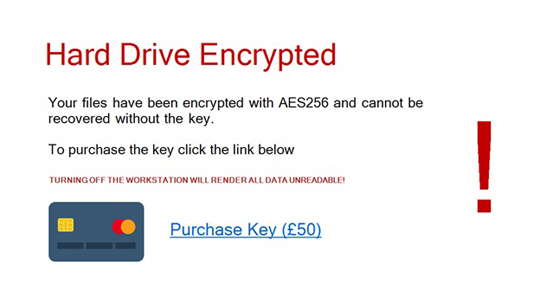RANSOM_SURESOME.THABBH
Trojan-Ransom.MSIL.Agent.gqd (KASPERSKY), Trojan:Win32/Tiggre!rfn (MICROSOFT), W32.Golroted (NORTON)
Windows


Threat Type: Ransomware
Destructiveness: No
Encrypted: No
In the wild: Yes
OVERVIEW
Downloaded from the Internet
This Ransomware arrives on a system as a file dropped by other malware or as a file downloaded unknowingly by users when visiting malicious sites.
It enables its automatic execution at every system startup by dropping copies of itself into the Windows Common Startup folder.
TECHNICAL DETAILS
161,280 bytes
EXE
Yes
15 Jan 2018
Steals information, Connects to URLs/IPs, Displays message/message boxes
Arrival Details
This Ransomware arrives on a system as a file dropped by other malware or as a file downloaded unknowingly by users when visiting malicious sites.
Autostart Technique
This Ransomware enables its automatic execution at every system startup by dropping the following copies of itself into the Windows Common Startup folder:
- %User Startup%\cd445b84-305e-408a-9d66-5dca29257bb2.exe
(Note: %User Startup% is the current user's Startup folder, which is usually C:\Documents and Settings\{user}\Start Menu\Programs\Startup on Windows 2000 and XP, and C:\Documents and Settings\{User name}\Start Menu\Programs\Startup on Windows Vista, 7, and 8.)
Information Theft
This Ransomware gathers the following data:
- User name
- Computer Name
- Name and write access of folders on all drives. eg. {Drive letter}:\{folders on drive letter}
Stolen Information
This Ransomware sends the gathered information via HTTP POST to the following URL:
- {BLOCKED}.{BLOCKED}.176.166/action/?action=files&username={User name}&computer={Computer Name}
- {BLOCKED}.{BLOCKED}.176.166/action/?action=userdetails&username={User name}&computer={Computer Name}
Other Details
This Ransomware does the following:
- It locks the desktop with a maximized view of the ransom note:

SOLUTION
9.850
13.920.04
22 Jan 2018
13.921.00
23 Jan 2018
Step 1
Before doing any scans, Windows XP, Windows Vista, and Windows 7 users must disable System Restore to allow full scanning of their computers.
Step 2
Note that not all files, folders, and registry keys and entries are installed on your computer during this malware's/spyware's/grayware's execution. This may be due to incomplete installation or other operating system conditions. If you do not find the same files/folders/registry information, please proceed to the next step.
Step 3
Identify and terminate files detected as RANSOM_SURESOME.THABBH
- Windows Task Manager may not display all running processes. In this case, please use a third-party process viewer, preferably Process Explorer, to terminate the malware/grayware/spyware file. You may download the said tool here.
- If the detected file is displayed in either Windows Task Manager or Process Explorer but you cannot delete it, restart your computer in safe mode. To do this, refer to this link for the complete steps.
- If the detected file is not displayed in either Windows Task Manager or Process Explorer, continue doing the next steps.
Step 4
Search and delete this file
- %User Startup%\cd445b84-305e-408a-9d66-5dca29257bb2.exe
Step 5
Scan your computer with your Trend Micro product to delete files detected as RANSOM_SURESOME.THABBH. If the detected files have already been cleaned, deleted, or quarantined by your Trend Micro product, no further step is required. You may opt to simply delete the quarantined files. Please check the following Trend Micro Support pages for more information:
Did this description help? Tell us how we did.

